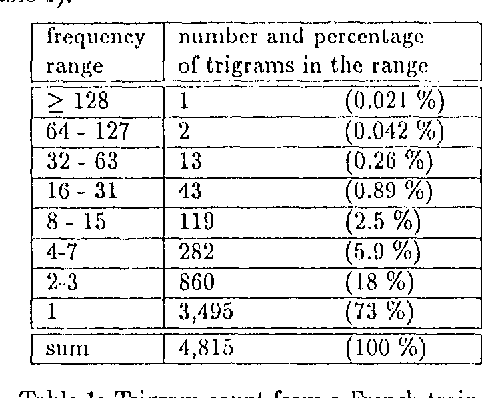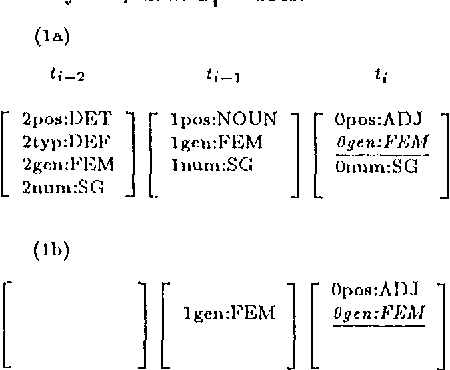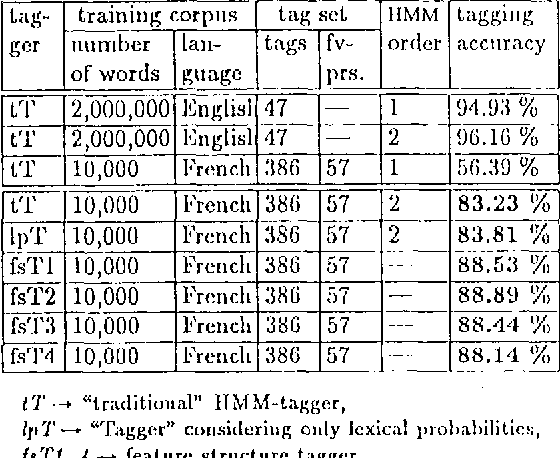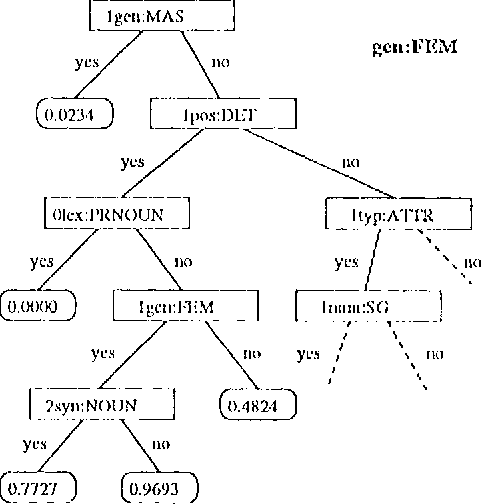Probabilistic Tagging with Feature Structures
Paper and Code
Oct 25, 1994



The described tagger is based on a hidden Markov model and uses tags composed of features such as part-of-speech, gender, etc. The contextual probability of a tag (state transition probability) is deduced from the contextual probabilities of its feature-value-pairs. This approach is advantageous when the available training corpus is small and the tag set large, which can be the case with morphologically rich languages.
* COLING-94, vol.1, pp.161-165, Kyoto, Japan. August 5-9, 1994. * Coling-94, 85 KB, 5 pages
 Add to Chrome
Add to Chrome Add to Firefox
Add to Firefox Add to Edge
Add to Edge